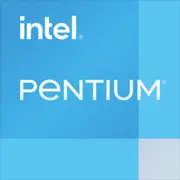Intel Core i7-10750H vs Intel Pentium 8505 (IPU)
CPU Comparison Result
Below are the results of a comparison of Intel Core i7-10750H and Intel Pentium 8505 (IPU) processors based on key performance characteristics, as well as power consumption and much more.
Advantages
- More Total Cores: 6 (6 vs 5)
- Larger L3 Cache: 12 MB (12 MB vs 8 MB (shared))
- Higher Technology: 10 nm (14 nm vs 10 nm)
- Newer PCI Express Version: Gen 4, 20 Lanes (CPU only) (3.0 vs Gen 4, 20 Lanes (CPU only))
- Higher Memory Type: DDR4, DDR5 (DDR4-2933 vs DDR4, DDR5)
- Newer Launch Date: February 2022 (April 2020 vs February 2022)
Basic
Intel
Label Name
Intel
April 2020
Launch Date
February 2022
Mobile
Platform
Mobile
i7-10750H
Model Name
?
The Intel processor number is just one of several factors - along with processor brand, system configurations, and system-level benchmarks - to be considered when choosing the right processor for your computing needs.
Pentium 8505 (IPU)
Comet Lake
Code Name
Alder Lake-U
CPU Specifications
6
Total Cores
?
Cores is a hardware term that describes the number of independent central processing units in a single computing component (die or chip).
5
12
Total Threads
?
Where applicable, Intel® Hyper-Threading Technology is only available on Performance-cores.
6
-
Performance-cores
1
-
Efficient-cores
4
2.60 GHz
Basic Frequency
-
5.00 GHz
Max Turbo Frequency
?
Max Turbo Frequency is the maximum single-core frequency at which the processor is capable of operating using Intel® Turbo Boost Technology and, if present, Intel® Turbo Boost Max Technology 3.0 and Intel® Thermal Velocity Boost. Frequency is typically measured in gigahertz (GHz), or billion cycles per second.
-
-
Performance-core Base Frequency
1200 MHz
-
Efficient-core Base Frequency
900 MHz up to 3.3 GHz
-
Performance-core Max Turbo Frequency
?
Maximum P-core turbo frequency derived from Intel® Turbo Boost Technology.
up to 4.4 GHz
-
L1 Cache
80 KB (per core)
-
L2 Cache
1.25 MB (per core)
12 MB
L3 Cache
8 MB (shared)
FCBGA1440
CPU Socket
?
The socket is the component that provides the mechanical and electrical connections between the processor and motherboard.
Intel BGA 1744
14 nm
Technology
?
Lithography refers to the semiconductor technology used to manufacture an integrated circuit, and is reported in nanometer (nm), indicative of the size of features built on the semiconductor.
10 nm
45 W
TDP
15 W
100°C
Max. Operating Temperature
?
Junction Temperature is the maximum temperature allowed at the processor die.
100°C
3.0
PCI Express Version
?
PCI Express Revision is the supported version of the PCI Express standard. Peripheral Component Interconnect Express (or PCIe) is a high-speed serial computer expansion bus standard for attaching hardware devices to a computer. The different PCI Express versions support different data rates.
Gen 4, 20 Lanes (CPU only)
64-bit
Instruction Set
?
The instruction set is a hard program stored inside the CPU that guides and optimizes CPU operations. With these instruction sets, the CPU can run more efficiently. There are many manufacturers that design CPUs, which results in different instruction sets, such as the 8086 instruction set for the Intel camp and the RISC instruction set for the ARM camp. x86, ARM v8, and MIPS are all codes for instruction sets. Instruction sets can be extended; for example, x86 added 64-bit support to create x86-64. Manufacturers developing CPUs that are compatible with a certain instruction set need authorization from the instruction set patent holder. A typical example is Intel authorizing AMD, enabling the latter to develop CPUs compatible with the x86 instruction set.
-
Memory Specifications
DDR4-2933
Memory Type
?
Intel® processors come in four different types: Single Channel, Dual Channel, Triple Channel, and Flex Mode. Maximum supported memory speed may be lower when populating multiple DIMMs per channel on products that support multiple memory channels.
DDR4, DDR5
128 GB
Max Memory Size
?
Max memory size refers to the maximum memory capacity supported by the processor.
-
2
Memory Channels
?
The number of memory channels refers to the bandwidth operation for real world application.
Dual-channel
8 GT/s
Bus Speed
-
45.8 GB/s
Max Memory Bandwidth
?
Max Memory bandwidth is the maximum rate at which data can be read from or stored into a semiconductor memory by the processor (in GB/s).
-
GPU Specifications
Intel® UHD Graphics for 10th Gen Intel® Processors
Integrated Graphics Model
?
An integrated GPU refers to the graphics core that is integrated into the CPU processor. Leveraging the processor's powerful computational capabilities and intelligent power efficiency management, it delivers outstanding graphics performance and a smooth application experience at a lower power consumption.
UHD Graphics 48EU
1.15 GHz
Graphics Frequency
?
Graphics max dynamic frequency refers to the maximum opportunistic graphics render clock frequency (in MHz) that can be supported using Intel® HD Graphics with Dynamic Frequency feature.
-


